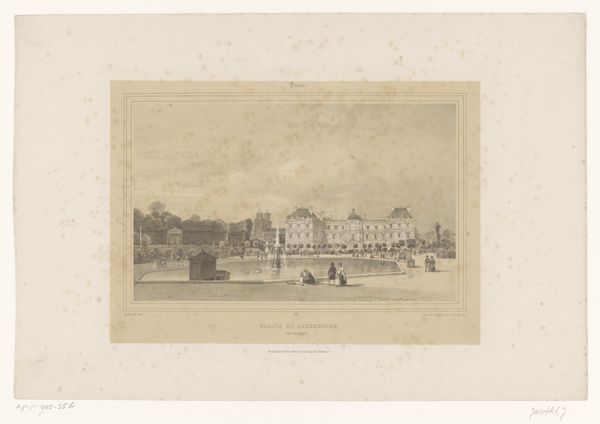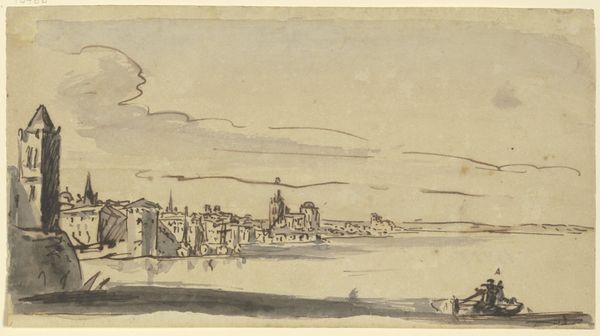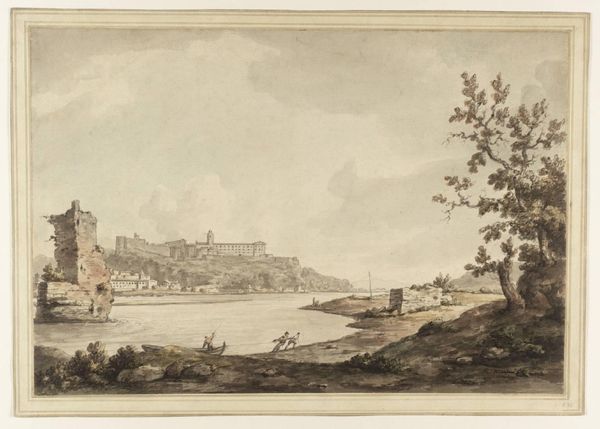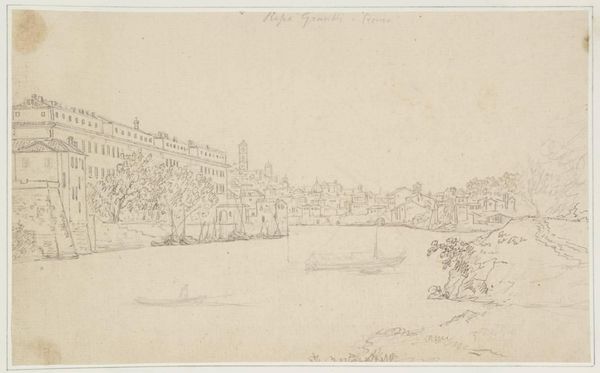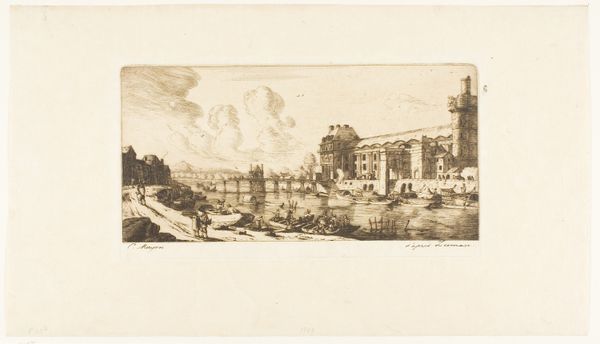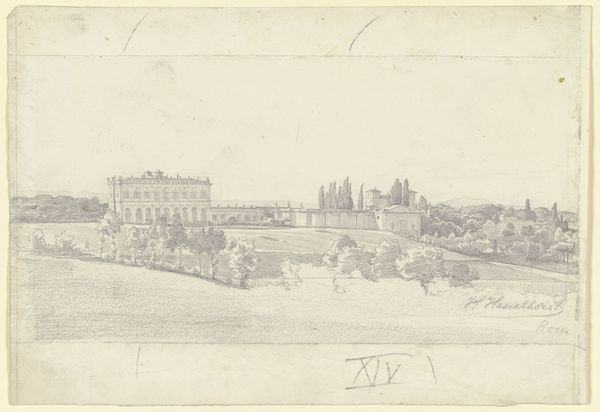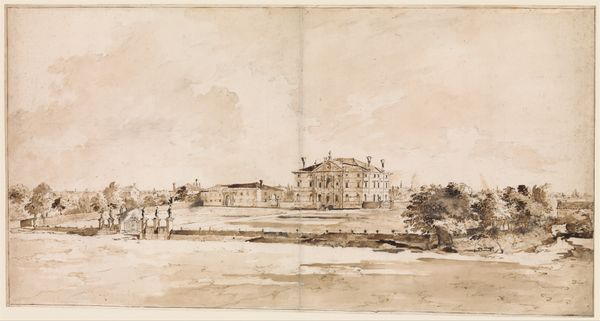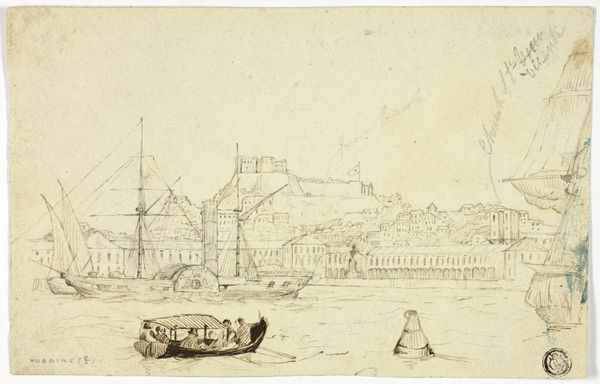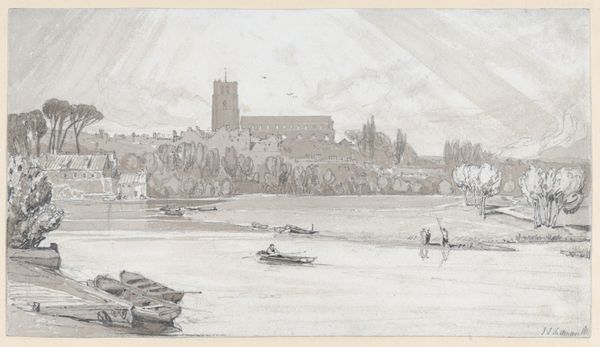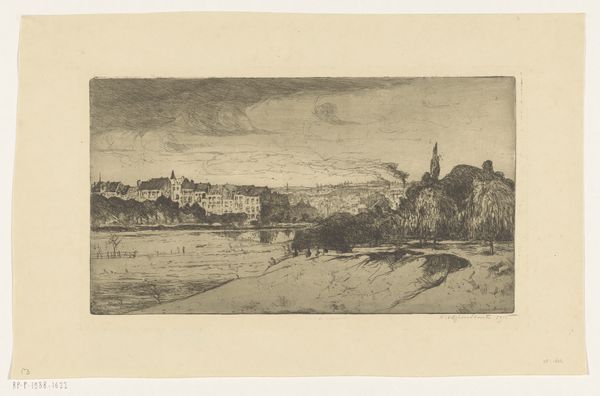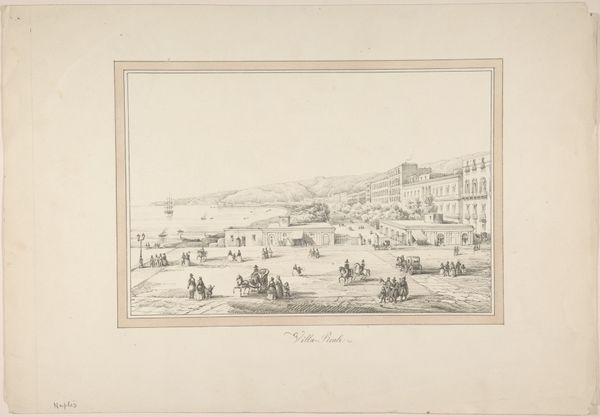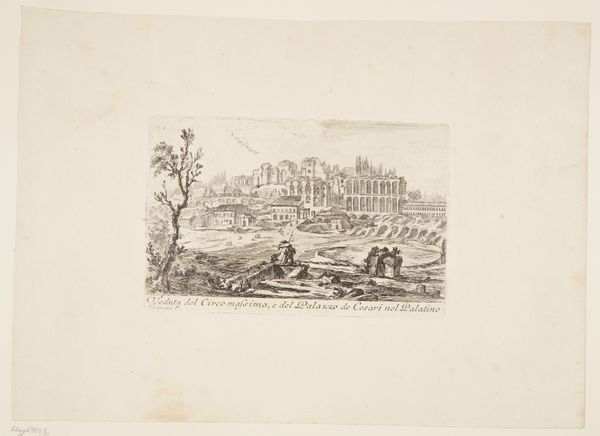
Gezicht op Chiatanone Veduta del Chiatanone v. del Castello dell'uovo 1851 - 1900
0:00
0:00
Dimensions: height 168 mm, width 233 mm
Copyright: Rijks Museum: Open Domain
Curator: Here we have "Gezicht op Chiatanone Veduta del Chiatanone v. del Castello dell'uovo," a drawing by Antoine Eugène Ernest Buttura, created sometime between 1851 and 1900. Editor: Immediately, it feels… distant. Like a memory fading at the edges. The muted tones and sketched figures evoke a stillness, a quiet observation of a life lived long ago. Curator: That sense of distance, I think, comes from Buttura’s strategic use of perspective. Notice how the city sprawls across the horizon, almost like a stage set, framing the everyday interactions of the figures in the foreground. Consider too, the role of Romanticism here – the sublime architecture set against a tranquil but still palpable socio-economic divide of those living there, framed by a landscape barely sustained. Editor: Right, it's a staged tableau. But I’m also drawn to the tiny human dramas playing out on the shore. The clusters of figures, each frozen in their own narrative—gossiping, mending nets, waiting, perhaps dreaming of escape? They look burdened, but hopeful somehow. And yet so very, very small in comparison to the vastness surrounding them. Curator: It raises questions of scale and power. How do individuals navigate urban landscapes that were themselves designed to impress and control? The looming castle, the sprawling city—these represent centuries of socio-political struggles made manifest in architecture, while the people at the foreground engage with a different reality. Their lives unfold within, but also against, this grand design. Editor: It also makes me think about travel. The sketches almost have a snapshot quality—like a fleeting moment captured during an early form of tourism. Imagine Buttura, sketchbook in hand, documenting a world unfamiliar and perhaps even romanticized from his point of view. Curator: Precisely! This is travel, and by extension art-making, as an act of claiming space, recording history. Buttura, in a way, imprints his gaze onto this Neapolitan scene, interpreting its narratives through his own cultural lens, inevitably bringing to question whose stories get prioritized and circulated. Editor: Looking at it this way shifts my perspective. It is a bit more charged than I initially realized. Well, this walk in someone else's shoes, albeit sketched, offers much to consider about both the beauty and the weight of the past. Curator: Agreed, this quiet cityscape reveals multiple layers of history and experience, encouraging us to reflect on power, perspective, and the complex relationship between people and the places they inhabit.
Comments
No comments
Be the first to comment and join the conversation on the ultimate creative platform.

